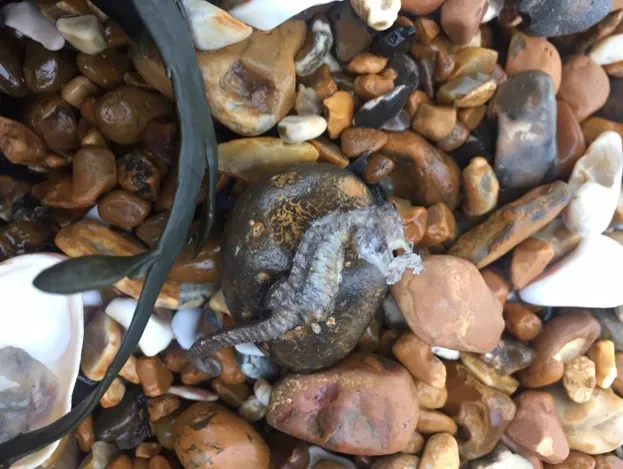It may surprise some, but seahorses are distributed all round the British Isles as far north as the Shetland Islands.
There are two species, the short-snouted and spiny seahorse, and they tend to live in shallow, coastal waters. Spiny seahorses prefer seagrass habitats, but short-snouted ones can be found just about anywhere. The south coast is Britain's main seahorse hotspot.
Occasionally they get washed up dead on beaches or other areas of coastline. The mild winter and recent storms may have increased the number being deposited on our shores.
And now The Seahorse Trust is appealing for anyone who finds a dead seahorse – whatever its condition – to send it to them.
One was recently seen and photographed (but not collected) on Brighton beach, near the pier. “It was on the right side of the pier, high up the beach,” says Neil Garrick-Maidment of The Seahorse Trust.
“It was a female short-snouted seahorse about the size of a little finger, and we need everyone out there looking to see if they can find it and send it to us.”

Scientists want to retrieve this short-snouted seahorse to take DNA samples.
Like all species of fauna and flora, seahorses have scientific names, as well as common ones. The short-snouted seahorse is Hippocampus hippocampus (‘hippocampus’ literally means horse caterpillar), while the spiny variety is H. guttulatus.
Or, at least, that’s the current situation.
A scientific paper published a few years ago claimed these scientific names may need changing because – going back more than 250 years – it appears that what was originally described as the short-snouted seahorse was in fact the spiny one.
As a result, H. hippocampus could end up applying to the spiny seahorse, and the short-snouted species could get a new name, H. brevirostris.
It sounds arcane, but experts say it’s important. “If that happens, we have a bit of a nightmare on our hands because all the legislation in Europe will need to be readjusted,” Garrick-Maidment says.
And there would be other difficulties, adds James Maclaine, senior curator of the fish section at the Natural History Museum. “In all the literature, you would have to check when it was published to work out what seahorse they are talking about when they use the name Hippocampus hippocampus!”
"We’re trying to build up a nice collection of fresh seahorse material that we can extract DNA from," Maclaine adds "and then use that to compare with some from the specimens in the original collection."
So, don't forget the seahorses if you're on a beach any time soon.
They are, in any case, remarkable animals – they eat, voraciously, tiny shrimp-like crustaceans called mysids (up to 70 a day) and are probably best-known for their gender-role reversal – in seahorses, it is the males that gestate and give birth to the babies.
